Pine needle infused honey lends pine’s medicinal benefits and beautifully fragrant qualities to this recipe. This honey infused with pine needles is delicious, and used for culinary purposes as well as medicinally. Perfect to make after a late autumn or winter forage, this pine needle recipe is simple to put together and has many uses!
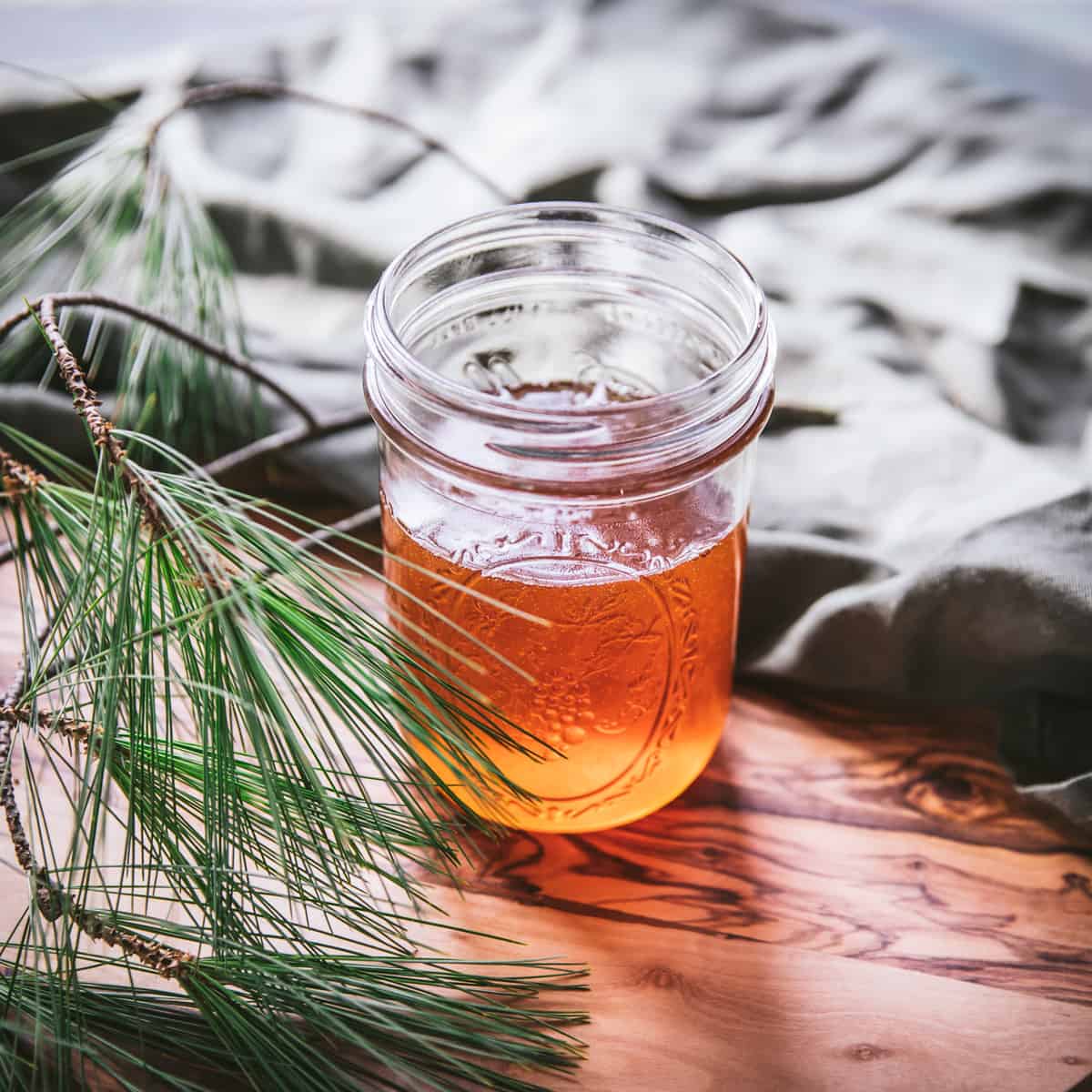
Want to save this post for later?
Forage for Pine Needles
Late fall and winter can feel pretty sparse for plants to forage, but one thing that you can almost always count on to find is pine needles. The beauty of this is that pine needles and most other conifer needles are edible and medicinal!
Before you forage pine needles, it’s important to be able to properly identify different types of conifers.
Most edible varieties of conifer needles are ok to use for this recipe, such as fir, douglas-fir, hemlock (not to be confused with poison hemlock), or spruce. Just be sure to stay away from yew as it is toxic to humans.
I used eastern white pine (Pinus strobus) in this recipe as that is what we have locally available.
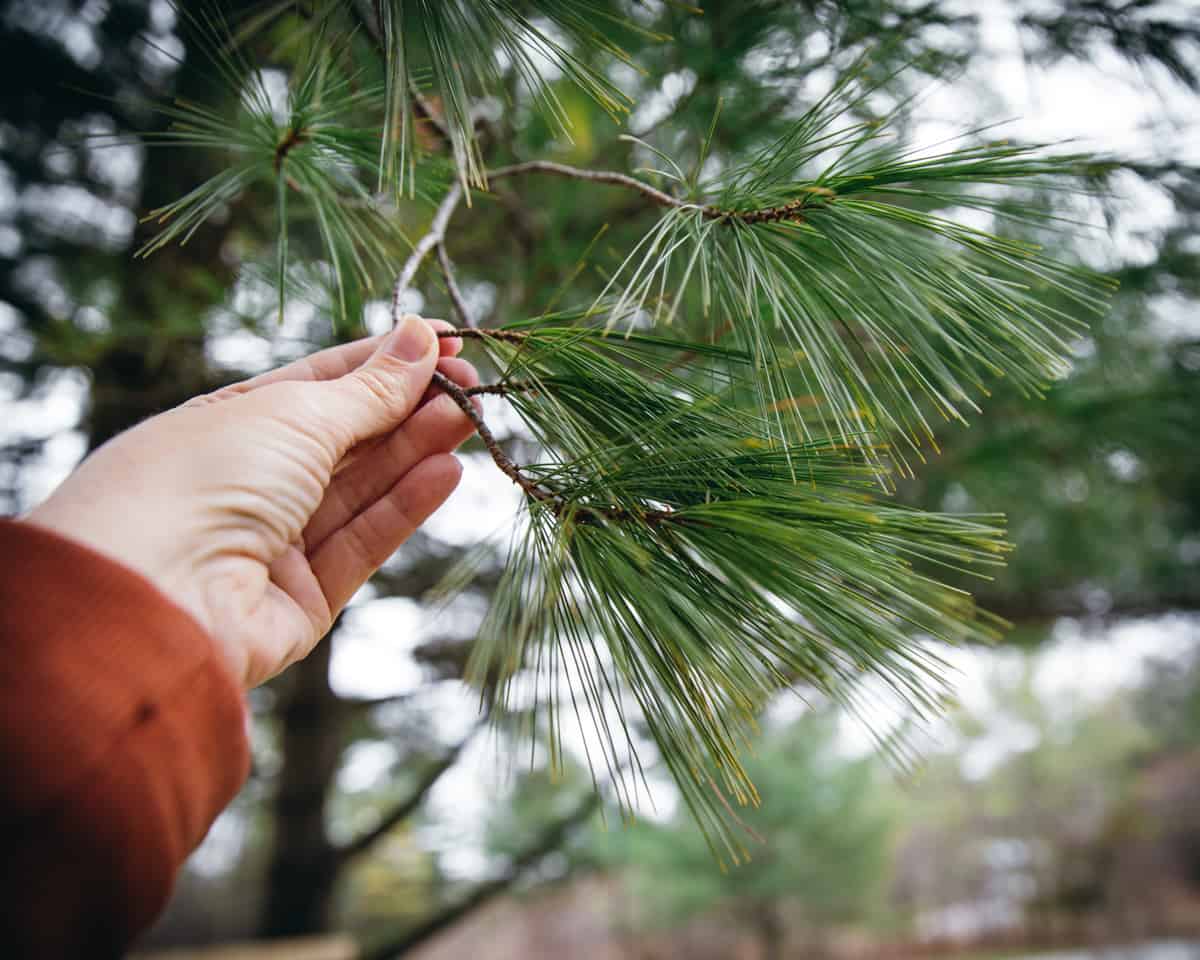
Note* Ponderosa pine (Pinus ponderosa), and potentially other yellow pines, should not be used internally by pregnant women, as there is a small chance that they could cause miscarriage.
Once prepared with information and ready for a foraging walk, it’s time to connect to the earth and gather some herbal ingredients for infused honey!
Winter is truly not as sparse as it seems, a good walk and some deep breaths always help me remember that.
Related: What to Forage in Winter: 30+ Edible and Medicinal Plants and Fungi
Medicinal Benefits
Most species of pine trees have medicinal qualities. They are aromatic and also have pain-relieving and antibacterial properties.
High in vitamin C, pine needles work really well as an expectorant for coughs and congestion, so late autumn and winter is the perfect time for a pine needle recipe.
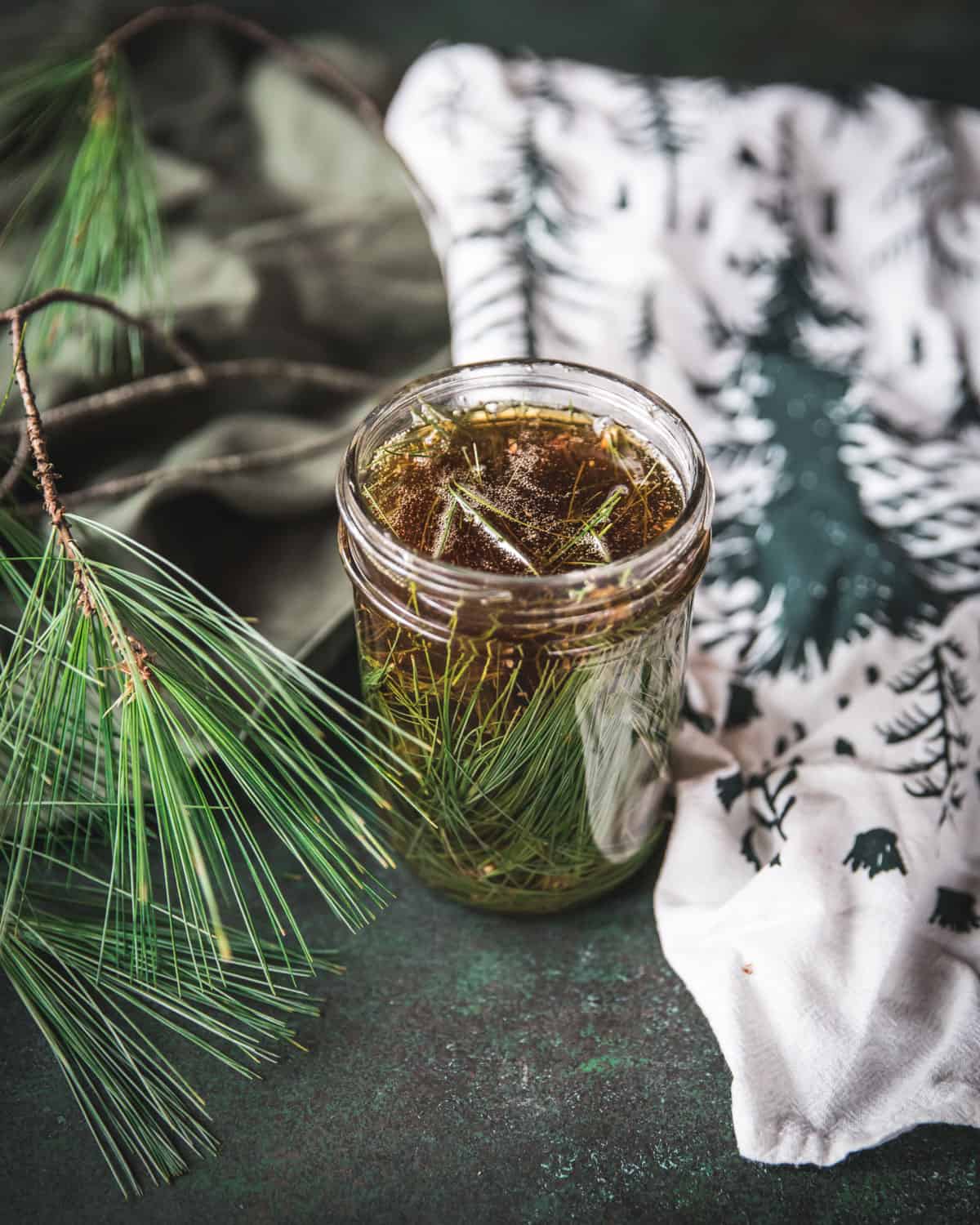
When combined together in a honey infusion, it can be very beneficial to calm a cough, soothe a sore throat, and relieve chest congestion.
For a more specific herbal medicine, try this pine needle cough syrup.
How to Make Pine Needle Infused Honey
Herbal honey infusions are truly simple to make, and this is an easy way to use and access the powers of conifer needles.
For a springtime infusion, try lilac flower infused honey!
Pine honey is popular to purchase, it’s honey made from bees that use pollen from pine trees. Amazing and delicious in its own right, pine honey is different than pine needle infused honey!
Also to note, a honey infusion is different than fermented honey. The process is different, the time required is different, and the benefits vary, but the deliciousness and medicinal qualities shine in both!
This particular honey we are making today is an infusion. It is essentially pine needles that steep in honey for aromatic, flavorful, medicinal, herbal honey.
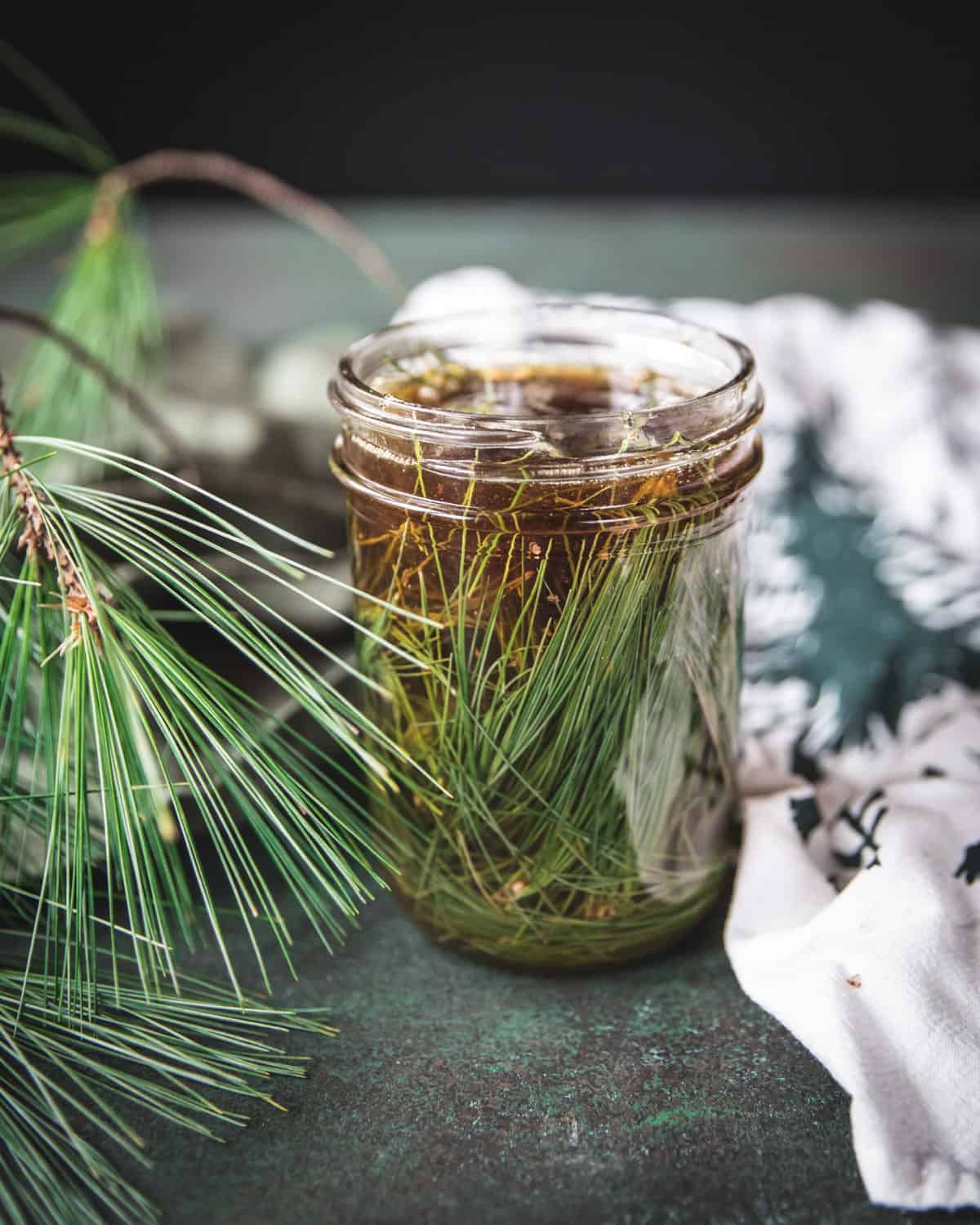
Ingredients
This recipe only uses two ingredients, it doesn’t get easier than that!
Pine needles: Forage your own, the best part about this is the completely localized flavor it will bring to this honey infusion. Other edible conifer needles are ok to use as well.
Raw honey: Using raw honey is important to gain all of the natural antioxidant and antibacterial properties. Combined with the benefits of conifer needles, this is a powerhouse of an infusion!
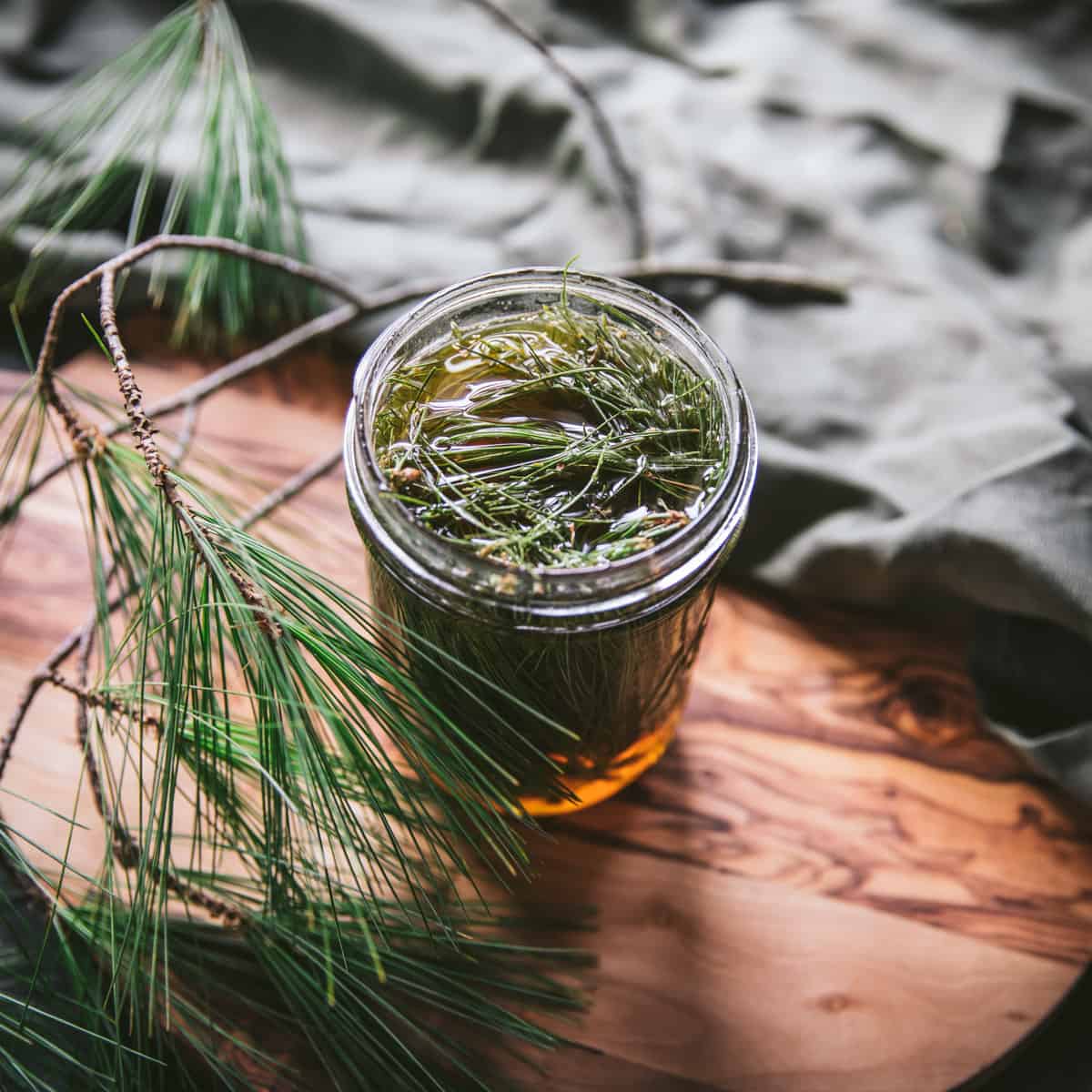
Make the Infused Honey
First, cut the pine needles off of the branches with scissors and rinse them if necessary.
Place them in a pint-sized mason jar until it is about 3/4 full. Pour the raw honey over the pine needles to cover, then stir it up to incorporate with a long spoon or a skewer.
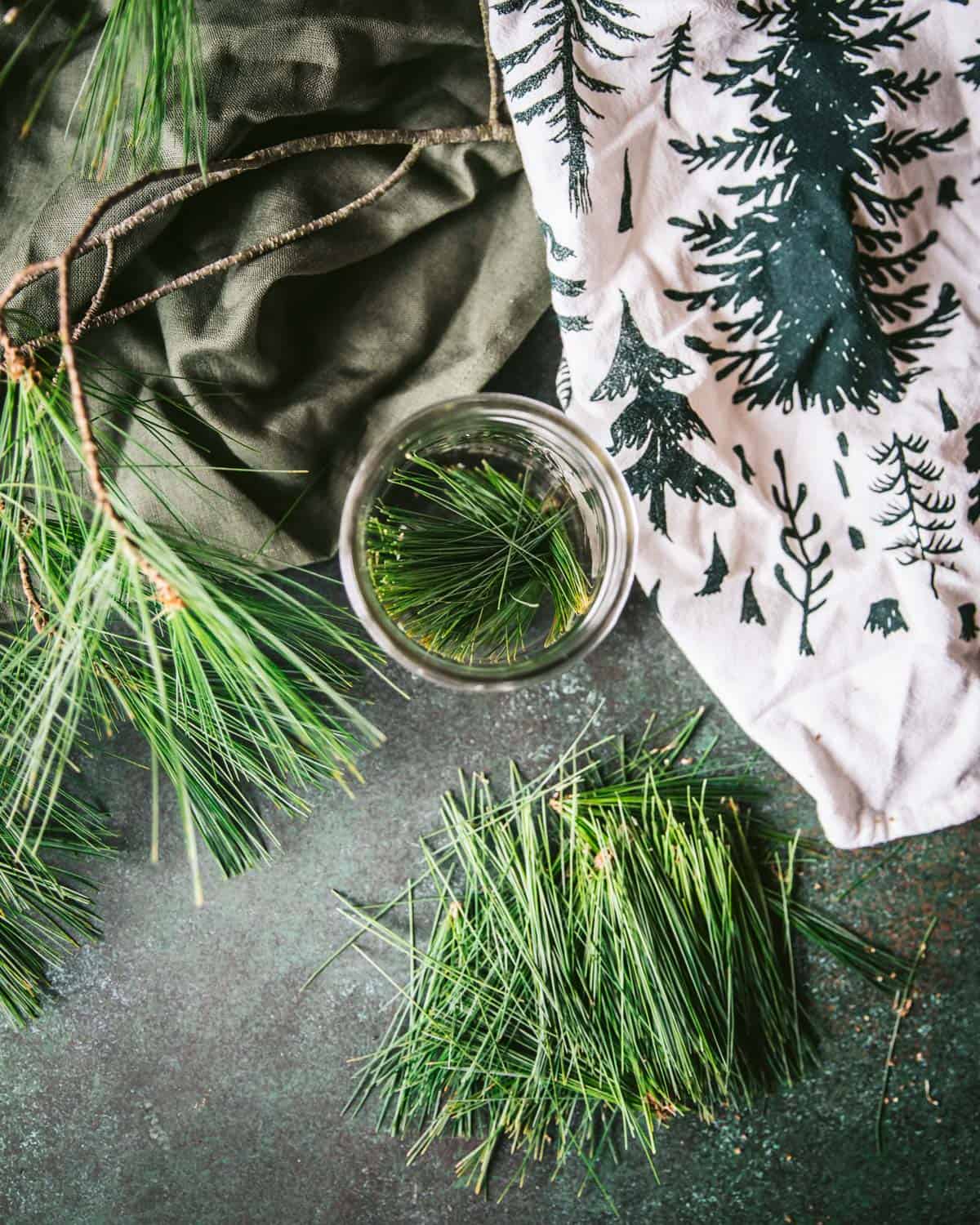
Give the honey a little time to settle in the jar, and then top the jar off with more raw honey. If some of the needles float and stick to the top, it’s ok and won’t impact the infusion.
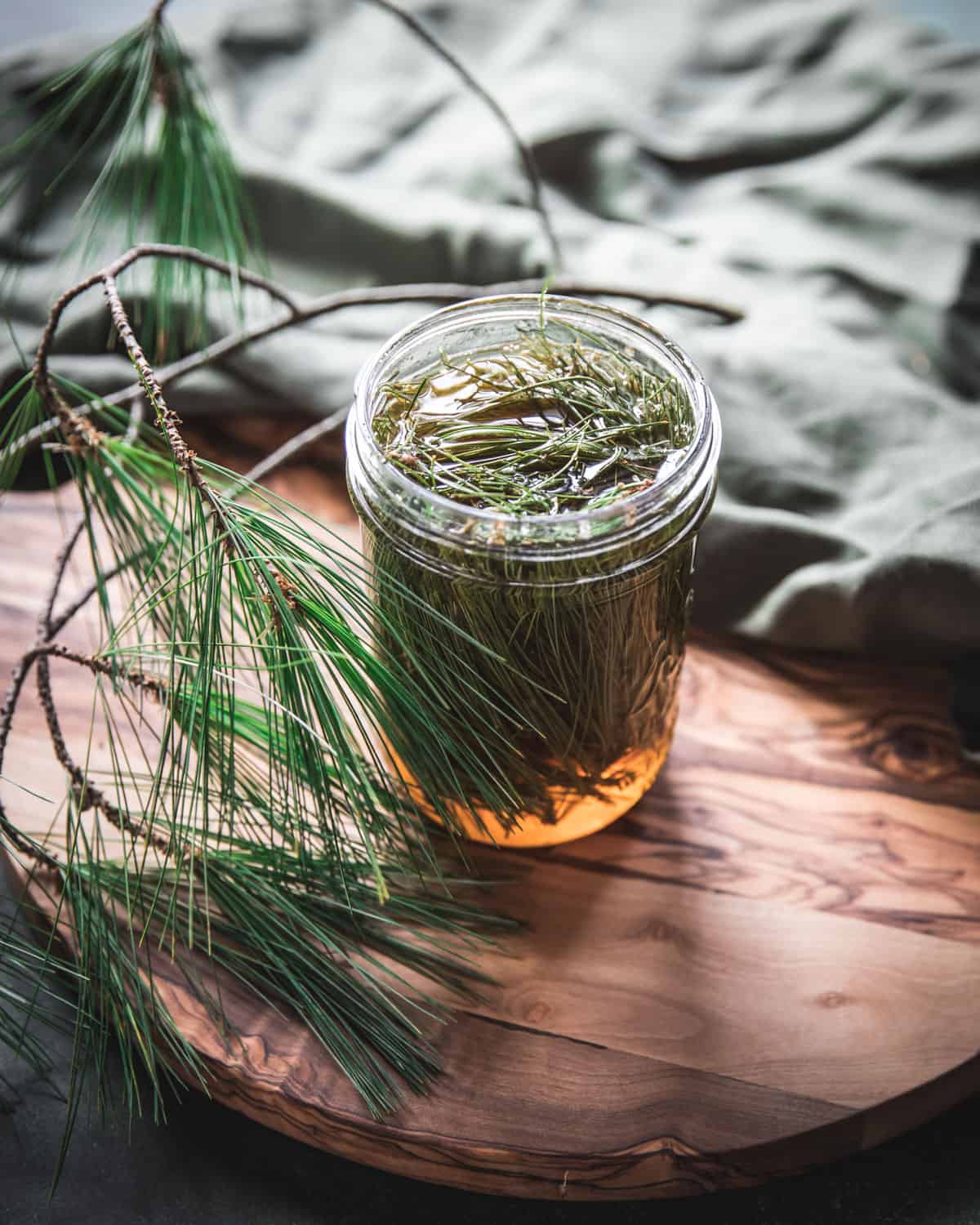
Tightly cap the jar, and flip it a few times so the raw honey coats all of the needles.
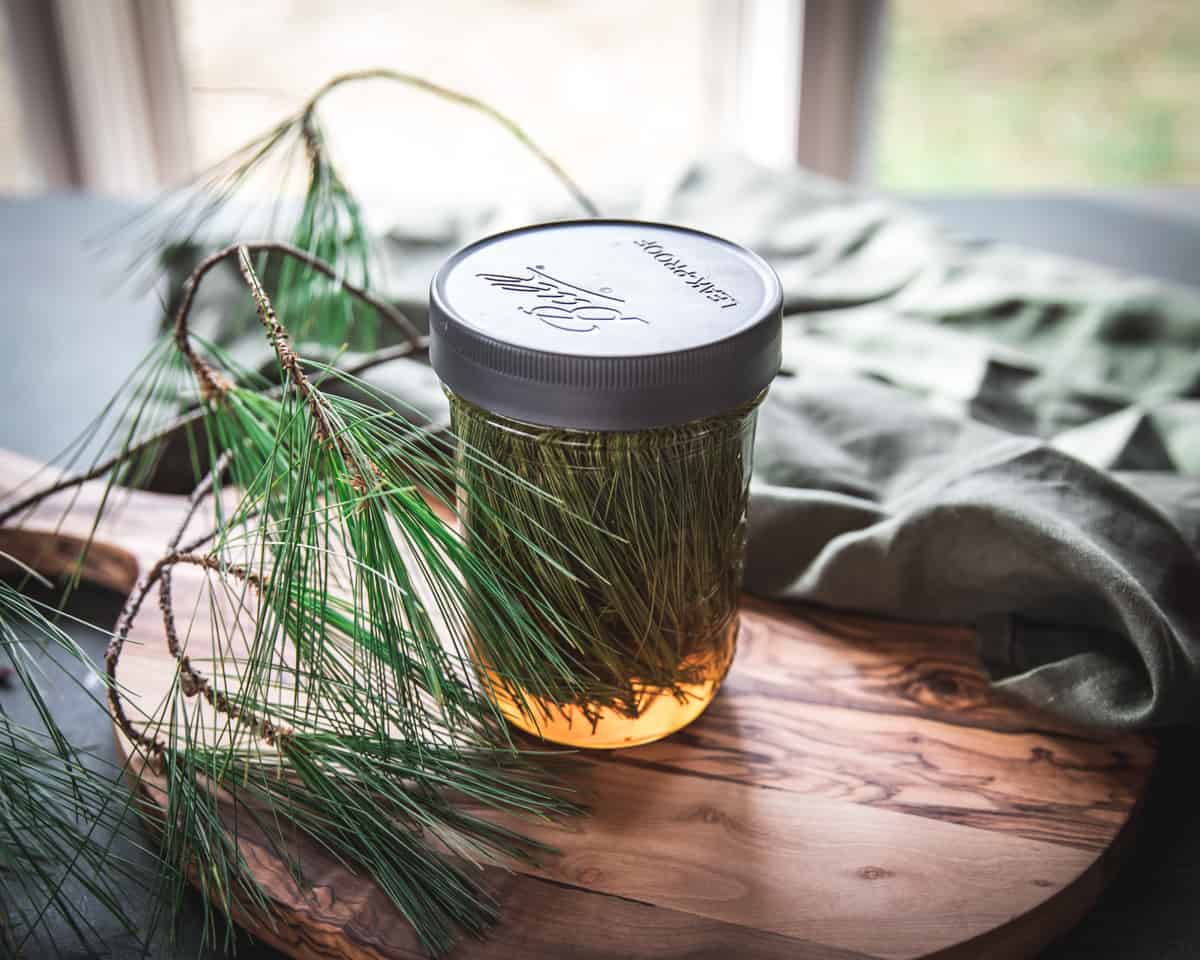
Set the jar aside and let the honey infuse with the pine needles for at least a few days, up to a few weeks. Stir it up now and then when you think about it.
Once you are ready to use the infused honey, strain it through a fine mesh sieve into a clean jar to remove the pine needles.
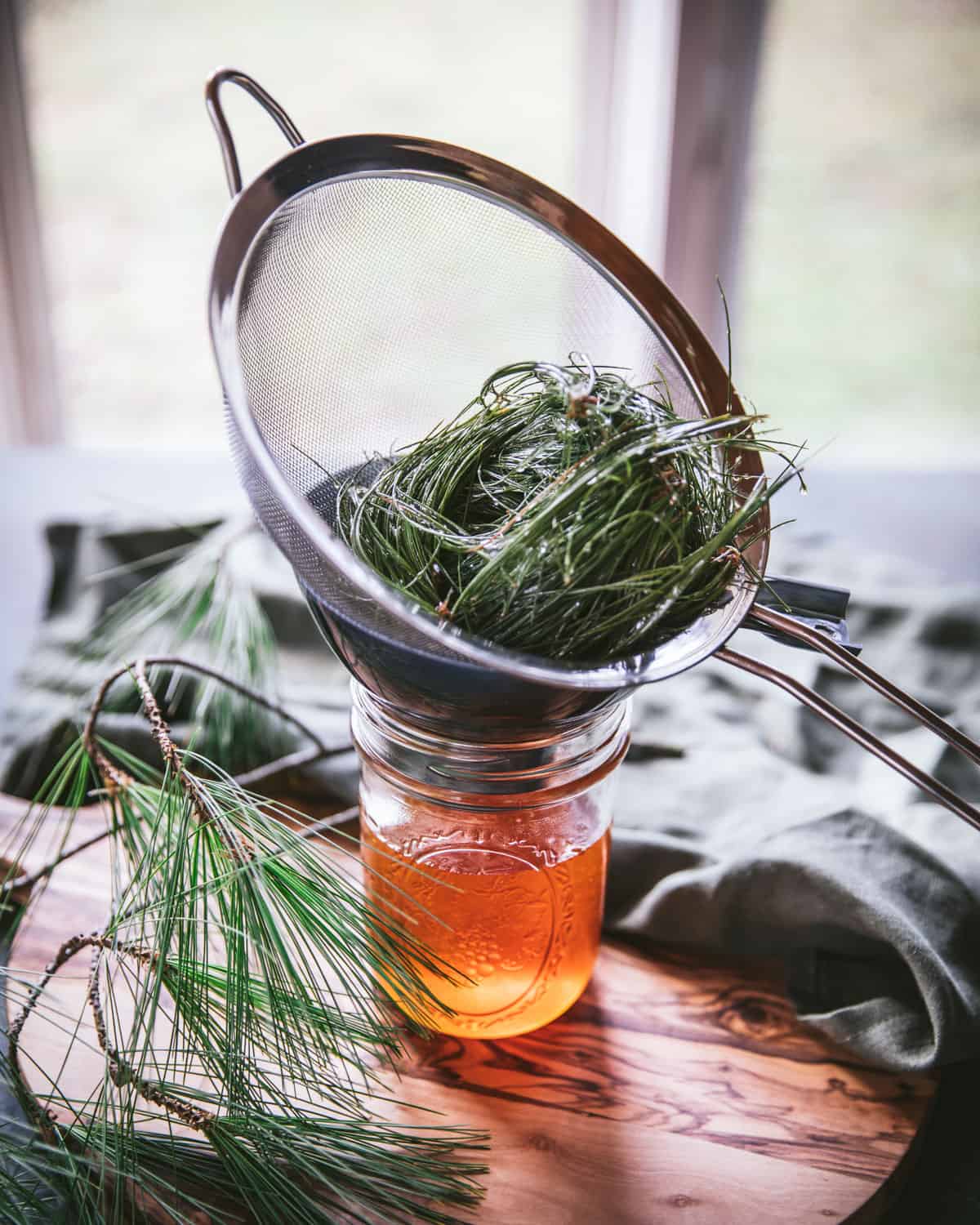
Now this delicious and health benefiting herbal honey is ready for you to consume!
How to Use Pine Needle Infused Honey
Use this infused honey as it is for amazing flavor anywhere you would normally use honey. Add it to tea, drizzle it on a scone, toast, or use it in baking recipes for a little kick of nature in the flavor.
To use medicinally, take a spoonful when a cough or sore throat arises. The honey will help coat the throat, and the herbal properties work as an expectorant to relieve congestion.
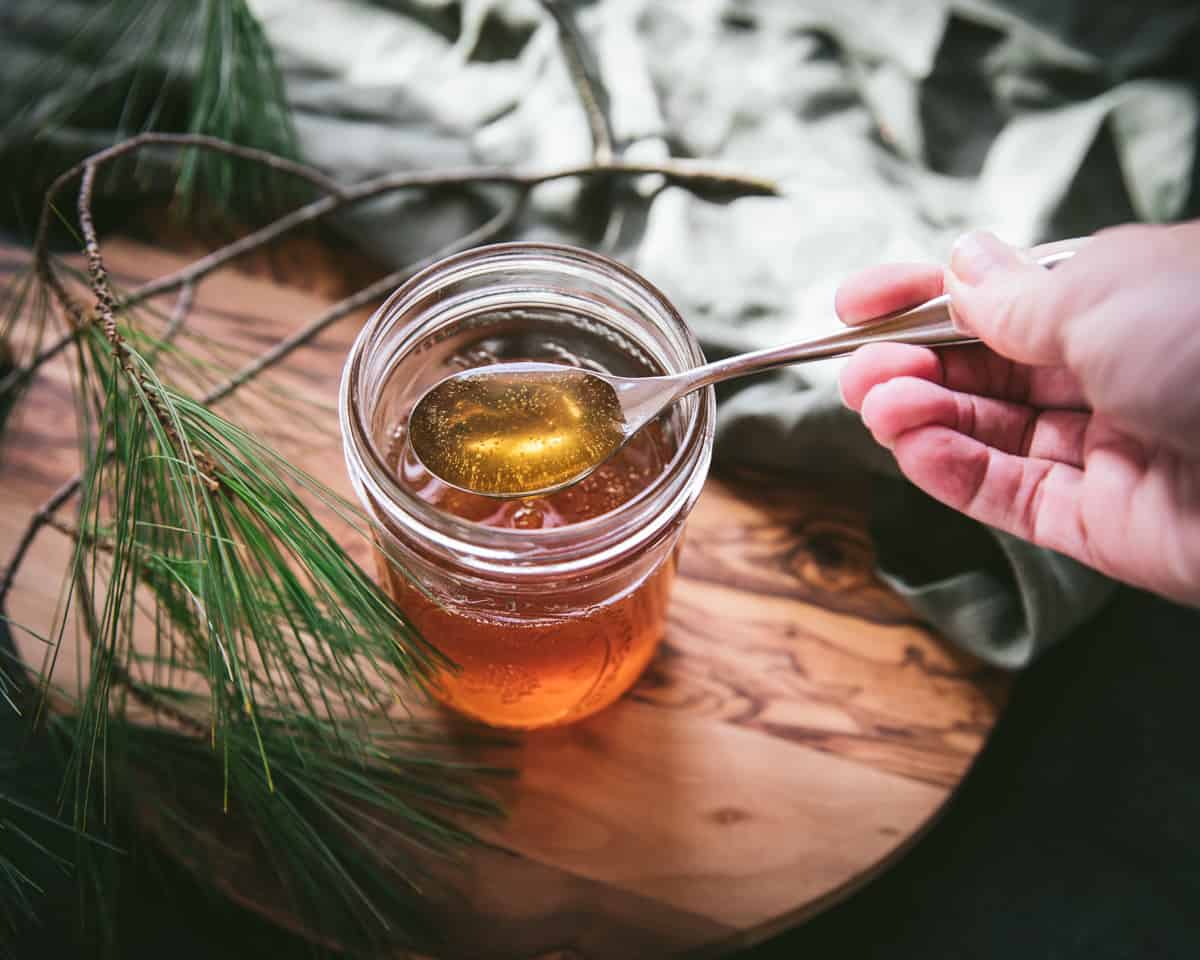
Since pine needles have high amounts of vitamin C, this is also a good way to boost immunity during cold and flu season.
This infused honey has a delicious and refreshing piney taste to it, as well as a lovely aroma. You’ll find yourself drizzling it on everything just to put an herbal forest feel and winter kick to all of your favorite snacks!
Interested in more pine needle recipes? Try these:
- Conifer Needle Tea
- Conifer Hot Toddy
- Conifer Infused Body Oil
- Conifer Shortbread Cookies
- Conifer Infused Vodka
- Pine Lotion Bars
- Pine Salve
- Conifer Tip Syrup
Find even more in my guide to 30+ Conifer Needle Recipes!
Pine Needle Infused Honey
Equipment
Ingredients
- 1-2 cups pine needles or other conifer needles
- 1 1/2 cups raw honey possibly a bit more
Instructions
- Cut the pine needles off the branch with scissors and put into a pint-size mason jar.
- Once the jar is about ¾ full of pine needles, pour in raw honey to completely cover the needles.
- Let the honey settle down into the jar for a bit, then top off the jar with more honey to cover the pine needles as much as possible.
- After a bit, some of the pine needles will inevitably float or stick to the top of the honey, and that’s ok.
- Cap the jar tightly and turn it over a few times to coat all the pine needles with honey.
- Let the honey infuse for at least a few days and up to several weeks before using, stirring the needles up a bit as often as you think of it.
- When you are ready to use the honey, strain out the pine needles with a fine mesh sieve.
Notes
- Most edible varieties of conifer needles are ok to use for this recipe, such as fir, douglas-fir, hemlock (not to be confused with poison hemlock), or spruce. Just be sure to stay away from yew as it is toxic to humans.
- Use this infused honey as it is for amazing flavor anywhere you would normally use honey. Add it to tea, drizzle it on a scone, toast, or use it in baking recipes for a little kick of nature in the flavor.
- To use medicinally, take a spoonful when a cough or sore throat arises. The honey will help coat the throat, and the herbal properties work as an expectorant to relieve congestion.
- The infused honey will store for several months or more in a pantry.

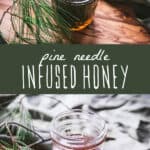
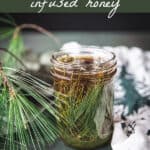
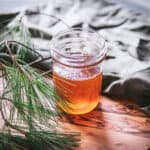

What if you have no way to forage the pine needles? Do you recommend a place to purchase safe pine needles?
You could try Etsy or another online marketplace. I’ve never purchased any online, so I’m not really sure.
What is your advice for how to soften honey without destroying its properties? I would like to make a number of honey infused products but I buy my honey in bulk and it is often not liquidy when I get to using it.
Also, what would happen if a person were to try to infuse maple syrup? Do you know what the results would be?
Ki Kay. I like to set my jar of honey in a pot of warm water until it liquefies. Yes, you can totally infuse maple syrup the same way as honey. Enjoy!
Please check your source on the pine honey. Bees do not use pine pollen to make honey; however, using pine needles to make pine infused tea, syrup or honey is supreme! I made your pine needle cough syrup and it is wonderful!! So easy (& quick) to make from just two simple ingredients and yet it yields a powerhouse of benefits. Honey infused with pine needles is next on my list. Thank you!
Hi Candace, I looked into this and you are right! I’ve seen pine honey and fir honey, but apparently it is made with honeydew and not pollen. I will edit the post to reflect that. Thanks!
I have been collecting pine & cedar leaves through the spring, summer and fall. They make a sumptuous forest tea. Steeping different barks over night render a beautiful bath water. I can not imagine not enjoying this forest tea. I will try the forest honey infusion and vinegar. Thk you for your work I enjoy your recipes.
You’re so welcome. Enjoy!